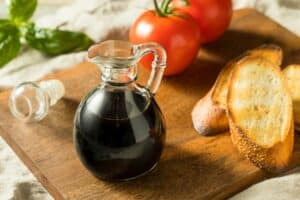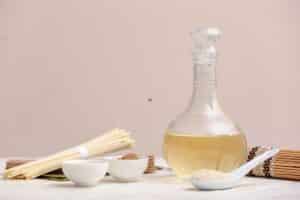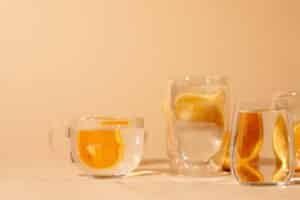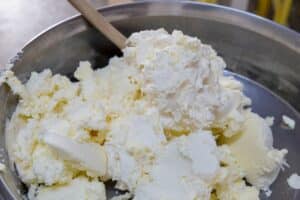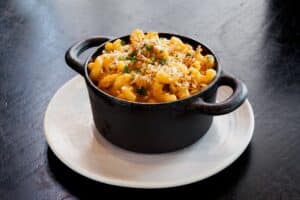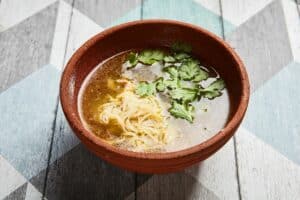Also known as table, refined, or white sugar, granulated sugar has several variations that can act as replacements if you’re out of it or trying to cut back on your intake.
Since sugar occurs naturally, making granulated sugar involves isolating the sugar crystals in beet or cane plants then soaking them in water.
The sugar is ground or pulverized to expose the inner cells. Then, it is left to dry on mesh or cloth, and the granules are collected.
Readily available in markets and food shops worldwide, this baking essential is a simple carbohydrate that dissolves or melts easily, giving quick energy to the consumer.
Sugar converts to glucose after digestion, meaning if eaten in excess, your body will store sugar in fat cells. It’s high in calories and has very little nutritional value.
So, granulated sugar is best eaten incorporated into a rare treat. However, that doesn’t stop most people from enjoying it. The average American adult consumes about 77 grams of sugar per day.
Granulated sugar has a subtle taste, complementing other flavors and sweetening drinks – the most common being tea or coffee. Granulated sugar has a fine consistency that can be ground even further to make a powder.
Sugar hardly spoils and can stay fresh for a year or more before it loses its taste. Granulated sugar blends flawlessly with other ingredients and is used in savory sauces or soups.
With that, let’s dive into some granulated sugar substitutes you can consider to sweeten up your next dish.
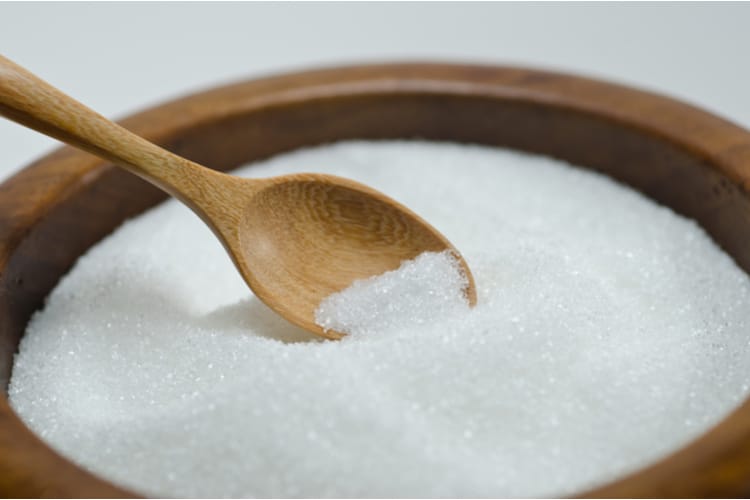
5 Recommended Substitutes for Granulated Sugar
What are some substitutions for granulated sugar? This section will elaborate on some of the top choices you can resort to if you need an alternative based on your diet or lack of ingredients in your kitchen, but you still want to make those deliciously sweet chocolate chip cookies.
1. Cane Sugar
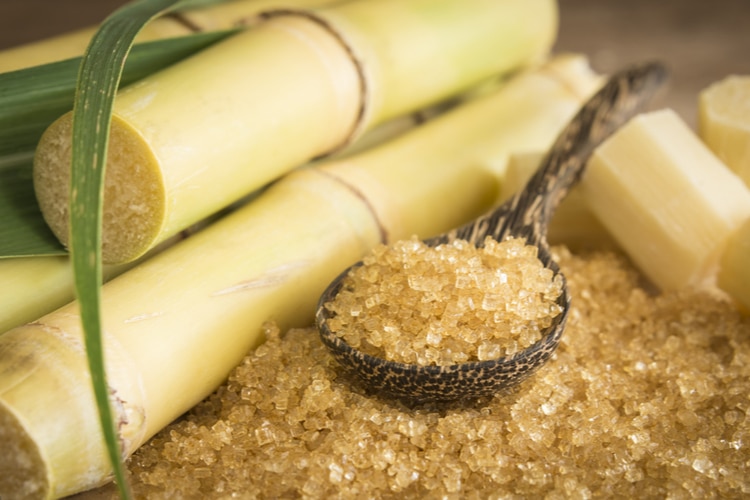
Cane sugar is a sugar that’s exclusively made from sugar cane, a plant similar to bamboo that grows in tropical climates. It comes in many forms, including unrefined, raw, and refined.
This sugar is created from chopping up the sugar cane and extracting its juice. The liquid is boiled to make a dark syrup, which is unrefined molasses.
The sugar is crystallized, but the process differs. The more the sugar crystals are washed, the more molasses is lost, hence the color ranges from white to brown.
Unrefined cane sugar is dark since it retains the majority of the molasses. Raw is intermediate, with coarse to medium-sized crystals, and is light brown, or not as much molasses.
Refined is the purest form of cane sugar and is ground to a very fine consistency with all the impurities removed.
Brown sugar, which will be elaborated on below, is created from refined cane sugar, with different amounts of molasses mixed back in.
You can use cane sugar directly from the package for cookies, cakes, and other desserts. Many recipes will want you to combine cane with another type of sugar.
It’s water-soluble and melts when heated. You can use cane sugar as a crunchy garnish on baked muffins.
Cane sugar makes a great white sugar substitute because of its sweetness, but the flavor varies depending on how much molasses is included.
The more refined the sugar, the more pure, clean, and sweet the taste. The only downside is that it can dry out or become clumpy, based on the molasses content.
2. Brown Sugar
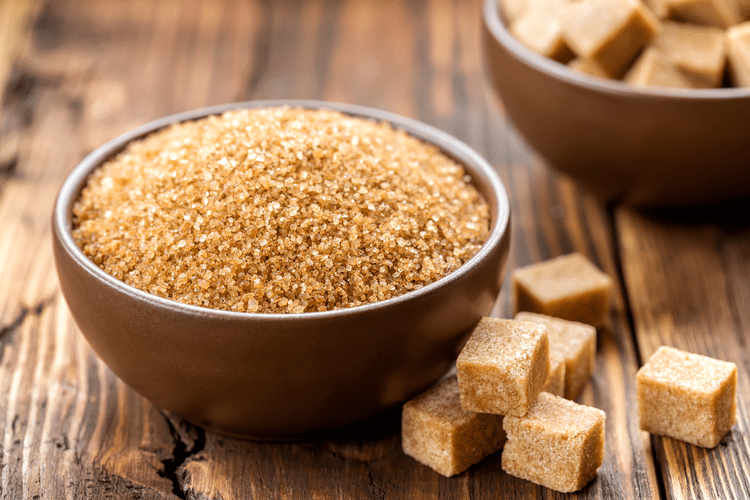
Brown sugar is dark in color and rich in flavor with the addition of molasses. It’s often manufactured in major sugar-producing areas of the world, such as the Caribbean and Brazil.
Regardless, brown sugar is widespread and popular with a dark sweetness in sauces, glazes, and baked goods.
It can last two years or more and reacts differently than raw sugar. Brown sugar is often seen in baking, candy, or eaten with hot cereals. Light brown sugar is the most common.
However, dark brown sugar has a richer flavor. Brown sugar can be used instead of granulated to provide an extra touch of flavor and moisture, increasing the moisture content in the recipe slightly.
Brown sugar is often used in marinades for meat, such as bacon. It can be melted into the sugar syrup and included in beverages or glazes.
When measuring brown sugar, it needs to be tightly packed to ensure you’re using the right amount. It’s heavier than white sugar but lighter than raw.
Most recipes pair brown sugar with white. Its flavor is reminiscent of toffee or caramel. The lighter the sugar, the milder and less complex the flavor will be.
You can use brown sugar in cakes, cookies, muffins, frostings, or even more savory dishes like beans, vegetables, or baked ham.
3. Honey

Honey is an organic, natural sweetener with no additives. It is easily digestible and versatile, adapting to all cooking processes with a long shelf life.
Honey is used in baked goods, marinades, and beverages globally. It’s one of the healthiest, most natural ways to sweeten things.
Its consistency is thick and golden. Bees make it from the nectar of flowering plants and regurgitate it. Excess water evaporates and forms the honey we know and love.
Yet, honey has dated back to 2100 B.C., being a highly valued part of life. At one point, it was even traded as currency.
There are several varieties of honey, all with different colors, tastes, and textures.
Honey can be paired with apples, spread on crackers, mixed with yogurt, and can also be a sugar replacement in baking. Keep in mind that the texture of the food will be affected, becoming moist and dense. But, it can provide a floral, fruity, or woodsy taste to your baked creation.
Generally, one cup of honey equates to 1 ¼ cups sugar, plus an additional ¼ cup of liquid – preferably water.
Honey can be used to roast peanuts, spice up a cake, and add sweetness to fried chicken. If stored properly, honey never spoils. If you notice some crystallization, you can just warm it with water, and the texture will go back to normal.
4. Coconut Sugar
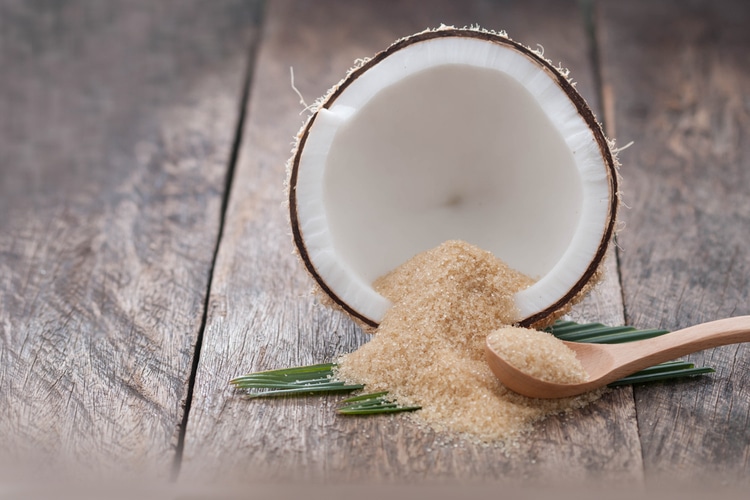
Coconut sugar is all-natural and created from the sap of coconut palm flowers in Southeast Asia. It’s a great substitute for other sweeteners and is beneficial since it doesn’t spike your blood sugar like normal sugar.
Removing the sap is similar to the process maple syrup undergoes. The sap is cooked down to a brown syrup that’s toasty and caramel-colored. Then, it’s bottled, pressed into blocks, or crystallized.
Coconut sugar can be swapped easily since no ingredients are added to it. But, it can cost about three times more than brown sugar.
If you’re willing to pay a bit extra, coconut sugar can be used anywhere other sugars are used, such as in cakes, cookies, granola, or sauces. You would simply do a one-to-one ratio.
It does have a lower burning temperature, and the size of the granules is more noticeable. For banana bread or pudding, that wouldn’t matter, but coconut sugar is darker, so for recipes like angel food cake, this sweetener wouldn’t be your first pick.
You would use the same quantity of coconut sugar, yet it may need some more moisture than regular sugar. Its flavor is similar to toffee or caramel, with no recognizable coconut flavor. You can find coconut sugar in specialty stores.
5. Confectioner’s Sugar
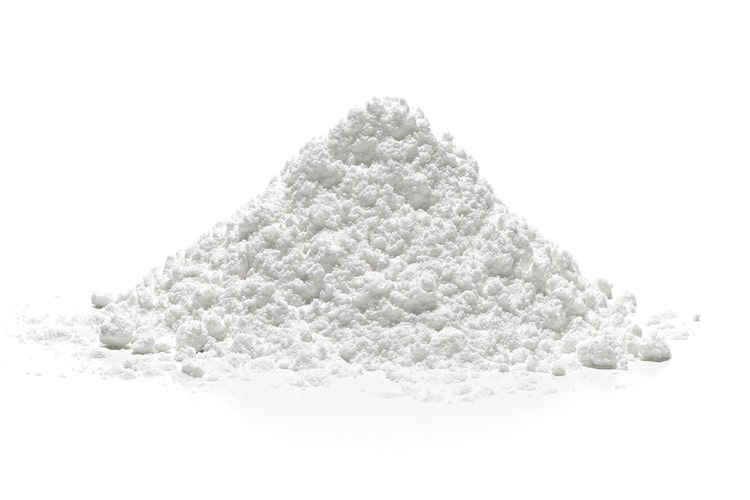
There is a variety of refined sugars that are ground into powdery forms. Confectioner’s sugar, also known as powdered, icing, or 10X sugar, is the most widely known.
It’s a superfine sugar – ideal for frostings, candy, or fudge. You can make cookies or other baked goods with confectioner’s sugar that will melt in your mouth or use it as a dusting over decorative desserts or fruits.
Powdered sugar is known for its smooth consistency, ideal for decorations or making dense dessert bars. It dissolves easily, but many recipes call for you to sift it once more, making it fluffier and removing any lumps.
That said, confectioner’s sugar behaves differently than granulated sugar that doesn’t achieve the same recognizable, snowy effect due to its larger crystals. Additionally, granulated sugar provides more air when mixing.
A cookie made with granulated sugar will give you a crispier result. One made with powdered sugar will be soft and tender.
It successfully gives you the appropriate sweet and smooth taste but depends on the situation where you’d replace granulated with powdered. For cakes, the texture won’t be exact.
But, powdered sugar is ideal for candies. One cup of granulated is equivalent to 1 ¼ powdered.
Like all of these recommendations, it’s best to measure powdered sugar by weight, rather than volume, if you’re going to substitute it for granulated sugar.
Frequently Asked Questions
In this part of the article, we’ll provide answers to the common questions that crop up when substituting granulated sugar.
Can I Substitute Powdered Sugar for Granulated Sugar in Cookies?
You can in a pinch, but it isn’t usually recommended. As stated previously, powdered sugar is smooth with smaller particles, and you may get unexpected results in texture. Cornstarch is often included, which could contribute to a weird consistency.
Can You Use Brown Sugar Instead of Granulated Sugar for Cookies?
Brown sugar and granulated sugar are practically interchangeable, but similarly to powdered, the texture of your cookies will change. They will be moister, softer, and darker.

